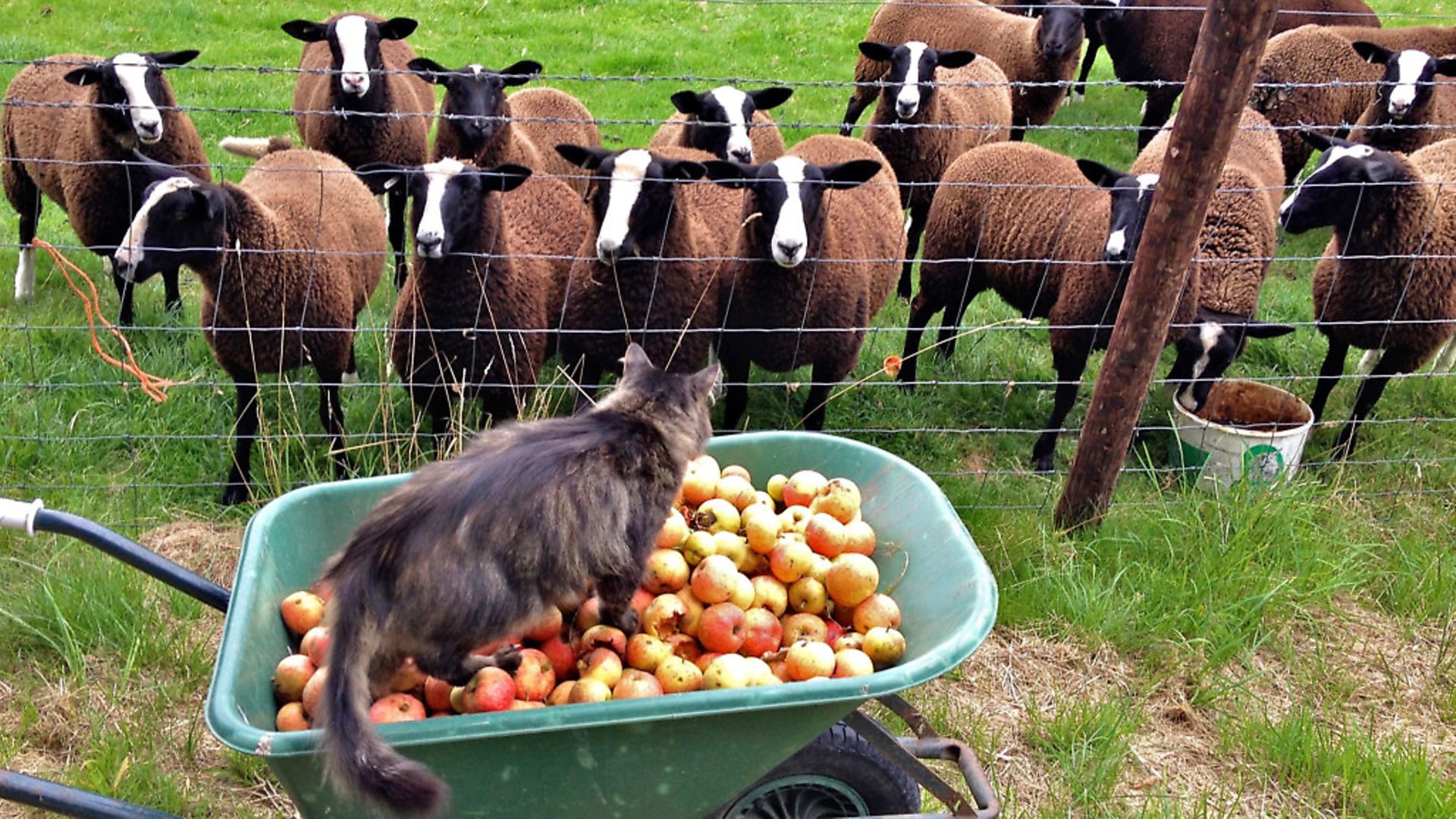Suzanna Crampton keeps Zwartbles in Kilkenny, Ireland. She talked to Debbie Kingsley

Suzanna Crampton cares for her flock of Zwartbles sheep on 14 of the family farm’s 45 acres of small green fields in the River Nore Valley of County Kilkenny, Ireland.
“This modest acreage has been in my mother’s family for seven generations and, when my grandmother died, I started to manage the farm for my mother,” she says. “Five years later I began to farm for myself when the tenant farmers who had leased our fields moved away.
“At 17, I enrolled on an agricultural, forestry and wildlife course which is where I learned much of what I now practice. In the early 1980s, I was apprenticed to sheep farmers in counties Wicklow and Carlow where I lived in caravans beside the flocks during lambing time. After my farming and environmental education, I worked in New York City and London and for a wildlife charity in South East Asia, returning to Ireland and our family farm after a bout of serious illness.
“My first small sheep flock were Suffolk sheep crossed with a neighbour’s Texel ram. As my flock grew, a farming friend pointed out that I couldn’t make much money with a normal commercial flock on our small acreage. He said that if I was going to try to earn a decent income from farming, I should get high end pedigree or rare breed sheep.
“In 2008, the National Ploughing Championships (Ireland’s biggest agricultural event) was held here in Kilkenny. I inspected sheep breeds to see what I might like to choose for our farm. I found all the top end pedigree breeds well out of my price bracket, but it was there in the sheep section where I first discovered Zwartbles sheep.
“Immediately hooked, I bought my first four ewes. One in-lamb hogget and three ewe lambs was all I could afford at the time. I struck lucky, as the three lambs were in-lamb to an unrelated ram so my Zwartbles flock expanded rapidly.
“Zwartbles are elegant, tall black sheep with a distinctive white blaze from poll to the muzzle, two to four short white socks and white-tipped tails. Like shorthorn cows, Zwartbles provide meat and milk with the addition of a very fine thick brown-black fleece with lots of crimp. Their temperament is very friendly and they are easy to handle. Zwartbles became popular with smallholders because of their exceptionally fine wool, meat and milk. Their very lean sweet meat standing out in the gourmet market. The lambs take longer to mature to harvestable weight compared to a common commercial lamb, but their ratio of live to dead weight is excellent. The milk is rich, smooth and creamier than milk from goat or cow and a litre of sheep’s milk can make three times the amount of cheese than a litre of cow’s milk. Sheep do give a better quality of milk when it’s grazed.
“I sell the wethers (castrated male lambs) as weanlings to smallholders, who raise them for harvesting in the autumn. I also sell freezer-ready half or whole lambs in October and November dependant on the seasonal maturity of the stock. I firmly believe that what you feed your livestock emerges in the flavour of the meat.
“Just as feeding chickens roast garlic will bring you garlic flavoured eggs for the next few days, there are parallels for Zwartbles’ meat and milk. My sheep graze in green fields laced with old meadow grasses, red and white clovers, vetches and herbs and in late summer and autumn I add windfall apples. My waiting list grows longer and more customers appear every year, a tribute to the well-fed Zwartbles. Farmers used to observe: ‘If the cows graze in that field, you get a sweet butter.’ I’m excited by that remark’s return to farm-speak because more customers want to know the precise provenance of their food.
“As a practicality, the docility and rich milk of the Zwartbles are a boon when you need to milk the colostrum off to feed newborn lambs in difficulty. 2010 was a very hard lambing year when the land froze solid, freezing all the water pipes, so I had to haul water from our aquifer to water the livestock. The winds were so bitterly cold that fresh born lambs exposed to freezing temperatures became quickly hypothermic. I rubbed newborn lambs dry, milked ewes, tubed colostrum into lambs and hung heat lamps. In my kitchen, the Aga stove’s bottom oven dried and warmed lambs. At my busiest there were three lambs drying in the oven and two under heat lamps in the kitchen.
“Zwartbles wool is a beautiful rich chocolate black-brown. Not far from us, in Graignamanagh village in the Barrow valley, is the wonderful traditional family-run Cushendale woollen mill. They clean, card and spin my fleeces into yarn for knitting and weave blankets of my design that reflect the Zwartbles’ distinctive white markings. Four white stripes on our blankets represent the four white markings that all Zwartbles sheep must have to correctly represent the breed.
“This last year has been the busiest ever, the kitchen table regularly stacked with packages, parcels and boxes of Zwartbles yarn, travel rugs, queen-sized bed blankets, small blankets for cats, calendars and postcards ready for shipping. I now sell my yarn and three kinds of Zwartbles wool blankets around the world. This came about because social media spread news about what, where, why and how I farm and raise sheep.
“Since Zwartbles have outstanding maternal properties, they make an excellent crossing variety as well as a pure breed. As for what makes the Zwartbles so useful, you milk them and you eat them and you can make wonderfully warm blankets, scarves, jumpers and more from the yarn of their lovely workable fleece.”
MORE: Twitter: @zwartblesie Facebook: Zwartbles Ireland
You Tube: Zwartbles Ireland Instagram: Zwartbles Ireland
website: www.zwartblesireland.com
Zwartbles Sheep Association http://www.zwartbles.org/
Image(s) provided by:
Archant







